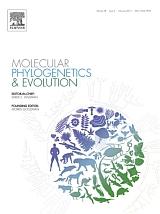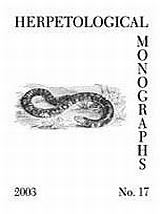




Related bibliographies:
Reptiles
Squamata
 Amphisbaenidae Amphisbaenidae
 Bipedidae Bipedidae
 Blanidae Blanidae
 Cadeidae Cadeidae
 Rhineuridae Rhineuridae
 Trogonophidae Trogonophidae
Africa
Central America
Europe
Middle East
North America
South America
West Indies
Indian Ocean
Mediterranean Sea






































































































































































































































































































































| |

Bibliography of
Worm Lizards (Amphisbaenia)
Note:
In order to limit redundancy, relevant literature indexed in the related bibliographies in the left column may not have been included in this page. For a comprehensive search of literature, these bibliographies should therefore also be consulted.
 |
Alexander, A.A. 1966. Problems involving vertebral segmentation in Amphisbaenids and primitive snakes. Dissertation Abstracts (B) 27: 671-672.
Alexander, A.A.; Gans, C. 1966. The pattern of dermal-vertebral correlation in snakes and amphisbaenians. Zoologische Mededelingen (Leiden) 41(11): 171-190.
American Society of Ichthyologists and Herpetologists Nomenclature Committee 1967. Comment on the proposed suppression of Amphisbaena mildei Peters, 1879. Z.N.(S.) 1746. Bulletin of Zoological Nomenclature 24: 209.
Applegarth, J.S. 1983. Index to the genera of Reptilia - a device to assist curators. Sauria (Lacertilia and Amphisbaenia). Published by the author, Eugene, Oregon. 54 pp.
Bellairs, A.A.; Gans, C. 1983. A reinterpretation of the amphisbaenian orbitosphenoid. Nature (London) 302(5905): 243-244.
Blackburn, D.G. 1985. Evolutionary origins of viviparity in the Reptilia. 2. Serpentes, Amphisbaenia, and Ichthyosauria. Amphibia-Reptilia 6(3): 259-291.
Bogert, C.M. 1964. Amphisbaenids are a taxonomic enigma. Natural History (New York) 73(7): 16-25.
Böhme, W. 1989. Zur systematischen Stellung der Amphisbanen (Reptilia: Squamata), mit besonderer Berücksichtigung der Morphologie des Hemipenis. Zeitschrift für Zoologische Systematik und Evolutionsforschung 27(4): 330-337.
Boulenger, G.A. 1878. Description d'un genre nouveau et d'une espèce nouvelle de la famille des amphisbenides. Bulletin de la Société Zoologique de France 3: 300-303.
Boulenger, G.A. 1885. Catalogue of the lizards in the British Museum (Natural History). Vol. 2. Iguanidae, Xenosauridae, Zonuridae, Anguidae, Anniellidae, Helodermatidae, Varanidae, Xantusiidae, Teiidae, Amphisbaenidae. British Museum (Natural History), London. 497 pp.
Broadley, D.G. 1997. Amphisbaenia. pp. 83-86. In: Wyk, J.H. van (ed.). Proceedings of the FitzSimons Commemorative Symposium (South African lizards: 50 years of progress) and Third H.A.A. Symposium on African herpetology: held at the Transvaal Museum, Pretoria, South Africa, 11-15 October 1993. Herpetological Association of Africa, Matieland. 227 pp.
Brongersma, L.D. 1932. Abnorme Beschilderung des Kopfes bei Amphisbaenen. Zoologischer Anzeiger 99: 132-134.
Brygoo, E.R. 1991. Les types d'amphisbaenides, pygopodides, xantusiides (reptiles, sauriens) du Museum national d'Histoire naturelle. Catalogue critique. Bulletin du Museum National d'Histoire Naturelle Section A Zoologie Biologie et Ecologie Animales 12(3-4): 3-18.
Cogger, H.G. 1993. General description and definition of the order Squamata. pp. 157-171. In: Glasby, C.J.; Ross, G.J.B. & Beesley, P.L. (eds.). Fauna of Australia. Vol. 2A. Amphibia & Reptilia. Australian Government Publishing Service, Canberra. 439 pp.
Cole, C.J.; Gans, C. 1987. Chromosomes of Bipes, Mesobaena, and other amphisbaenids (Reptilia), with comments on their evolution. American Museum Novitates 2869: 1-9.
Feldman, A.; Sabath, N.; Pyron, R.A.; Mayrose, I.; Meiri, S. 2016. Body sizes and diversification rates of lizards, snakes, amphisbaenians and the tuatara. Global Ecology and Biogeography 25(2): 187-197.
Gans, C. 1959. Modifications of the head joint in acrodont amphisbaenids and their functional implication. Anatomical Record 132: 441.
Gans, C. 1967. A check list of recent amphisbaenians (Amphisbaenia, Reptilia). Bulletin of the American Museum of Natural History 135(2): 61-106.
Gans, C. 1968. Relative success of divergent parhways in amphisbaenian specialization. American Naturalist 102: 345-362.
Gans, C. 1969. Amphisbaenians - reptiles specialised for a burrowing existence. Endeavour 28: 146-151.
Gans, C. 1970. Amphisbaenians - enigmatic reptiles. African Wild Life 24: 277-281.
Gans, C. 1971. Notes concerned with type-specimens and some interesting specimens of Amphisbaenidae from the collection of the Zoological Institute, USSR Academy of Sciences. Zoologicheskii Zhurnal 50: 1353-1357.
Gans, C. 1974. New records of small amphisbaenians from northern South America. Journal of Herpetology 8(3): 273-275.
Gans, C. 1977. The biological roles of taxonomic characteristics utilized in amphisbaenian classification. British Journal of Herpetology 5(8): 611-615.
Gans, C. 1978. The characteristics and affinities of the Amphisbaenia. Transactions of the Zoological Society of London 34(4): 353-416.
Gans, C. 1990. Patterns in amphisbaenian biogeography: a preliminary analysis. pp. 133-143. In: Peters, G. & Hütterer, R. (eds.). Vertebrates in the Tropics. Proceedings of the International Symposium on Vertebrate Biogeography and Systematics in the Tropics, Bonn, June 5-8, 1989. Alexander Koenig Zoological Research Institute and Zoological Museum, Bonn. 424 pp.
Gans, C. 2005. Checklist and bibliography of the Amphisbaenia of the world. Bulletin of the American Museum of Natural History 289: 1-130.
Gans, C.; Alexander, A.A. 1962. Studies on amphisbaenids (Amphisbaenia, Reptilia). 2. On the amphisbaenids of the Antilles. Bulletin of the Museum of Comparative Zoology 128: 65-158.
Gans, C.; Bauer, A.M.; Günther, R. 1997. An annotated type catalogue of the amphisbaenians (Reptilia: Squamata: Amphisbaenia) in the Zoological Museum, Berlin. Mitteilungen aus dem Zoologischen Museum in Berlin 73(1): 41-50.
Gans, C.; Huang, C.C.; Clark, H.F. 1967. The diphyletism of the Amphisbaenia (Reptilia): a re-evaluation based upon chromosome counts. Copeia 1967: 485-487.
Gans, C.; Mathers, S. 1977. Amphisbaena medemi, an interesting new species from Colombia (Amphisbaenia, Reptilia), with a key to the amphisbaenians of the Americas. Fieldiana Zoology 72(2): 21-46.
Gans, C.; Wever, E.G. 1972. The ear and hearing in Amphisbaenia (Reptilia). Journal of Experimental Zoology 179(1): 17-34.
Gasc, J.P. 1977. Morphologie vertébrale et mode de locomotion chez les squamates: superiorité de l'analyse morpho-fonctionelle sur la morphologie descriptive. Bulletin biol. Fr. Belg. 111(1): 29-36.
Gray, J.E. 1844. Catalogue of tortoises, crocodilians, and amphisbaenians in the collection of the British Museum. British Museum (Natural History), London. 80 pp.
Gray, J.E. 1865. A revision of the genera and species of amphisbaenians with the descriptions of some new species now in the collection of the British Museum. Proceedings of the Zoological Society of London 1865: 442-455.
Gray, J.E. 1872. Catalogue of Shield reptiles in the Collection of the British Museum. Part 2. Emydosaurians, Rhynchocephalia, and Amphisbaenians. London. 41 pp.
Greene, H.W. 1973. Defensive tail display by snakes and amphisbaenians. Journal of Herpetology 7(3): 143-161.
Heatwole, H.; Pianka, E.R. 1993. Natural history of the Squamata. pp. 197-209. In: Glasby, C.J.; Ross, G.J.B. & Beesley, P.L. (eds.). Fauna of Australia. Vol. 2A. Amphibia & Reptilia. Australian Government Publishing Service, Canberra. 439 pp.
Hutchinson, M.N.; Donnellan, S.C. 1993. Biogeography and phylogeny of the Squamata. pp. 210-220. In: Glasby, C.J.; Ross, G.J.B. & Beesley, P.L. (eds.). Fauna of Australia. Vol. 2A. Amphibia & Reptilia. Australian Government Publishing Service, Canberra. 439 pp.
Iordansky, N.N. 1984. [Morpho-functional analysis of the jaw apparatus and the problem of origin of the amphisbaenians]. (In Russian, English summary). Zoologicheskii Zhurnal 63(10): 1516-1528.
Kearney, M. 2002. Appendicular skeleton in amphisbaenians (Reptilia: Squamata). Copeia 2002(3): 719-738.
Kearney, M. 2003. Systematics of the Amphisbaenia (Lepidosauria: Squamata) based on morphological evidence from recent and fossil forms. Herpetological Monographs 17: 1-74.
Kearney, M.; Stuart, B.L. 2004. Repeated evolution of limblessness and digging heads in Worm Lizards revealed by DNA from old bones. Proceedings of the Royal Society Biological Sciences Series B 271(1549): 1677-1683.
Laurent, R.F. 1947. Notes sur les Amphisbaenidae d'Afrique. Revue de Zoologie et Botanique Africaine (Bruxelles) 40: 52-63.
Lee, M.S.Y. 1998. Convergent evolution and character correlation in burrowing reptiles: towards a resolution of squamate relationships. Biological Journal of the Linnean Society 65(4): 369-453.
Longrich, N.R.; Vinther, J.; Pyron, R.A.; Pisani, D.; Gauthier, J.A. 2015. Biogeography of worm lizards (Amphisbaenia) driven by end-Cretaceous mass extinction. Proceedings of the Royal Society Biological Sciences Series B 282(1806): 20143034.
Loveridge, A. 1941. Revision of the African lizards of the family Amphisbaenidae. Bulletin of the Museum of Comparative Zoology 87: 353-451.
Macey, J.R.; Papenfuss, T.J.; Kuehl, J.V.; Fourcade, H.M.; Boore, J.L. 2004. Phylogenetic relationships among amphisbaenian reptiles based on complete mitochondrial genomic sequences. Molecular Phylogenetics and Evolution 33(1): 22-31.
Mané, Y.; Trape, J.F. 2015. Note sur une collection d’amphisbènes (Squamata, Amphisbaenidae) d’Afrique occidentale. Bulletin de la Société Herpétologique de France 154: 35-60.
Mateus, M.B.; Pinto, L.C.L.; Ribeiro Moura, M. de; Pires, M.R.S. 2011. The two-headed snake in the view of the inhabitants of Itatiaia village, Minas Gerais, Brazil. Biotemas 24(3): 111-117.
Mattison, C. 1991. Keeping and breeding lizards. Blandford, London. 224 pp.
Measey, G.J.; Tolley, K.A. 2013. A molecular phylogeny for sub-Saharan amphisbaenians. African Journal of Herpetology 62(2): 100-108.
Meylan, P.A. 1984. The northwestern limit of distribution of Rhineura floridana with comments on the dispersal of amphisbaenians. Herpetological Review 15(1): 23-24.
Mott, T.; Vieites, D.R. 2009. Molecular phylogenetics reveals extreme morphological homoplasy in Brazilian Worm Lizards challenging current taxonomy. Molecular Phylogenetics and Evolution 51(2): 190-200.
Peters, W.C.H. 1879. Über die Amphisbaenen und eine zu denselben gehörige neue Art (Lepidosternon wuchereri). Monatsberichte der Königlich Akademie der Wissenschaften zu Berlin 1879(March): 273-277.
Presley, R. 1983. A shaky foundation in the structure of the skull. Nature (London) 302(5905): 210-211.
Rogner, M. 1997. Lizards. Vol. 2. Monitors, skinks and other lizards including tuataras and crocodilians. Krieger, Malabar, Florida. 317 pp. (Translation of German 1994 original).
Rosenberg, H. 1967. Hemipenial morphology of some amphisbaenids (Amphisbaenia: Reptila). Copeia 1967: 349-361.
Rosenberg, H.I.; Cavey, M.J.; Gans, C. 1991. Morphology of the hemipenes of some Amphisbaenia (Reptilia: Squamata). Canadian Journal of Zoology 69(2): 359-368.
Seufer, H. 2017. Eine schier unglaubliche Geschichte oder Anmerkungen zum Lebensalter von Doppelschleichen (Amphisbaenia). Sauria (Berlin) 39(1): 17-20.
Stejneger, L.H. 1916. Notes on Amphisbaenian nomenclature. Proceedings of the Biological Society of Washington 29: Unpaginated.
Talanda, M. 2016. Cretaceous roots of the amphisbaenian lizards. Zoologica Scripta 45(1): 1-8.
Tarlo, L.B.H. 1968. An outline classification of the squamates. British Journal of Herpetology 4: 32-35.
Teixeira, R.D.; Colli, G.R.; Bao, S.N. 1999. The ultrastructure of the spermatozoa of the worm lizard Amphisbaena alba (Squamata, Amphisbaenidae) and the phylogenetic relationships of the amphisbaenians. Canadian Journal of Zoology 77(8): 1254-1264.
Thomas, R. 1965. The feeding habits of captive amphisbaenids. Herpetologica 21: 238.
Thomas, R. 1966. Additional notes on the amphisbaenids of Greater Puerto Rico. Breviora 249: 1-23.
Vanzolini, P.E. 1951. A systematic arrangement of the Family Amphisbaenidae (Sauria). Herpetologica 7: 113-123.
Vidal, N.; Azvolinsky, A.; Cruaud, C.; Hedges, S.B. 2008. Origin of tropical American burrowing reptiles by transatlantic rafting. Biology Letters 4(1): 115-118.
Vidal, N.; Hedges, S.B. 2009. The molecular evolutionary tree of lizards, snakes, and amphisbaenians. Comptes Rendus Biologies 332(2-3): 129-139.
Walls, J.G. 1979. Amphisbaenians. Tropical Fish Hobbyist 27(8): 16.
Wever, E.G.; Gans, C. 1973. The ear in Amphisbaenia (Reptilia); further anatomical observations. Journal of Zoology (London) 171(2): 189-206.
Withers, P.; O'Shea, J.E. 1993. Morphology and physiology of the Squamata. pp. 172-196. In: Glasby, C.J.; Ross, G.J.B. & Beesley, P.L. (eds.). Fauna of Australia. Vol. 2A. Amphibia & Reptilia. Australian Government Publishing Service, Canberra. 439 pp.
|
| |



















































































































































































|

